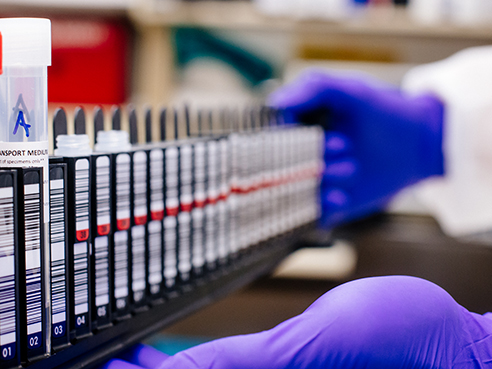 With the return to on-campus instruction at its three campuses, the UA System will resume weekly COVID reporting each Friday afternoon on its dashboard for the first time since in-person classes ended in November.
With the return to on-campus instruction at its three campuses, the UA System will resume weekly COVID reporting each Friday afternoon on its dashboard for the first time since in-person classes ended in November.
UAB officials expect weekly cases to be higher than the fall semester — at least during the first few weeks of the semester — in part because higher rates of spread are present in the state and more aggressive testing being conducted among students, faculty and staff this semester.
“Last semester, our testing strategy was appropriate relative to the amount of COVID-19 in the state and provided a safe on-campus environment; but we have increased testing to keep campus safe this semester,” said Suzanne Judd, Ph.D., School of Public Health Department of Biostatistics professor and director of the Lister Hill Center of Health Policy. “In order to maintain a safe campus with higher rates of COVID-19 around Birmingham, we implemented enhanced safety protocols and significantly increased testing, particularly for students/faculty/staff who do not have symptoms.”
Those who test positive for COVID-19 have access to medical guidance from Student Health and Employee Health and other important support services. UAB’s testing and contact-tracing data indicate that UAB COVID-19 protocols kept campus locations such as classrooms, common areas, labs and residence halls safe during the fall semester. The vast majority of positive cases were attributed to off-campus gatherings where safety measures were not consistently followed.
To maintain safety on campus this semester, UAB has moved to an enhanced active sentinel testing program (e.g., every university student and employee who has an on-site or hybrid schedule will have the option to test every other week). This is a significant increase in testing from the fall semester’s random sentinel testing (e.g., 5-10% of students invited to test in a random sample each week). In addition, more groups of students (e.g., athletics, choir, band, ROTC and those who live on campus) will participate in required testing.
Public health and infectious disease experts say this is important based on levels of infection in our region, and it will enable officials to quickly identify and isolate cases.
“At least early in the semester, we expect cases among students, faculty and staff to be higher than what we’re used to; but we anticipated and planned for it,” Judd said. “We’ve learned that aggressive testing of people with and without symptoms and other safety strategies in place are effective ways to control spread.”
